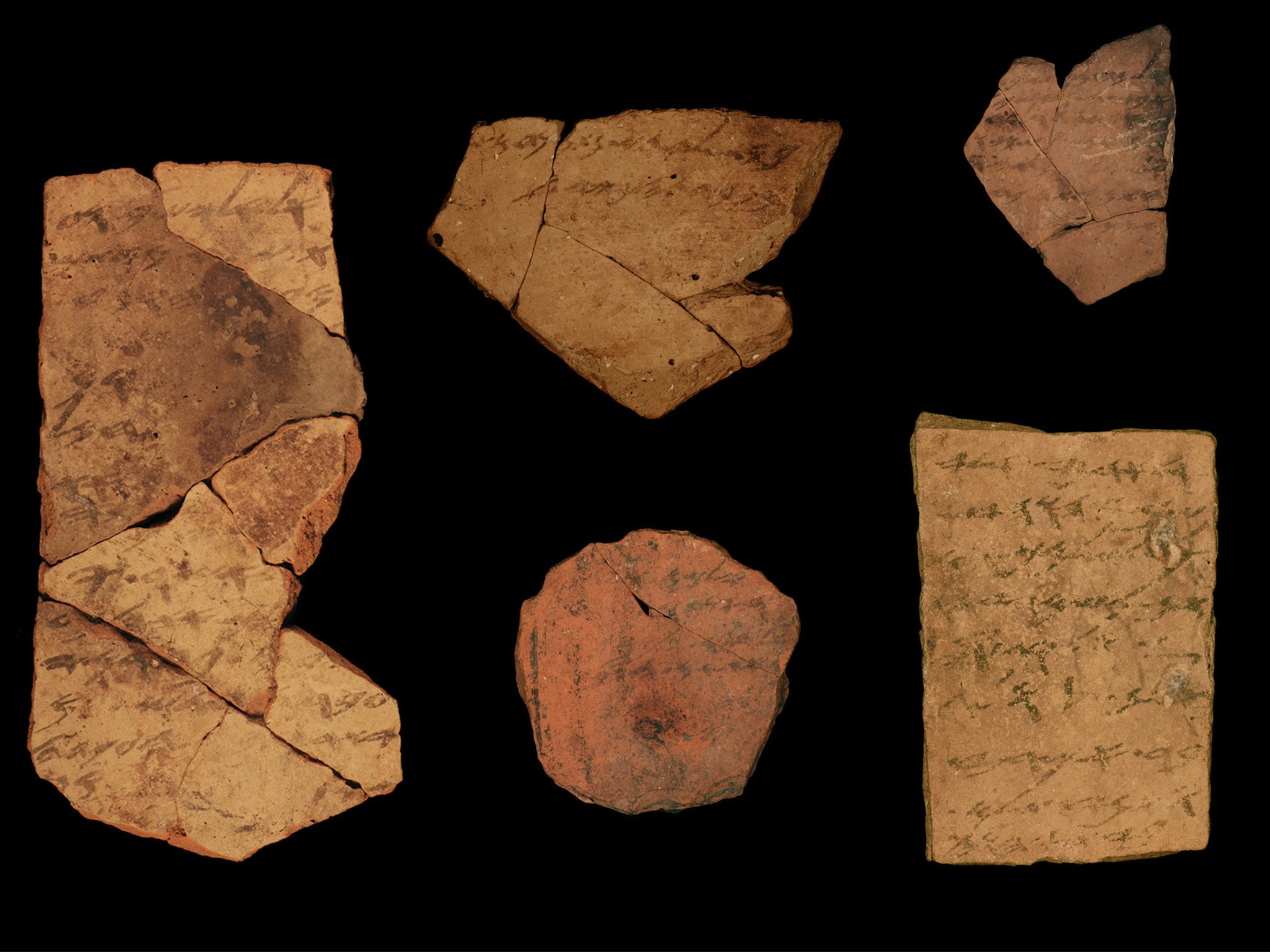Pottery discovery offers new evidence of when Bible was written
Analysis of military records written on pottery suggests that literacy was not only for for Jerusalem elite

A collection of letters written on clay 2,500 years ago could help to answer centuries-old questions about the Bible.
Using sophisticated imaging tools, researchers at Tel Aviv University in Israel have examined fragments of the inscribed pottery, known as ostraca, found in Tel Arad fortress.
The writing, dating back to around 600 BC, details nothing extraordinary and consists mostly of shopping lists and broken military commands. By comparing the different handwriting however, historians were able to deduce that the messages had been written by several different people across a range of social classes.
“In other words, the entire army apparatus, from high-ranking officials to humble vice-quartermasters of small desert outposts, was literate,” the academics wrote in the journal Proceedings of the National Academy of Sciences of the United States of America (PNAS).
“To support this bureaucratic apparatus, an appropriate education system must have existed in Judah at the end of the first Temple period [before 586 BC].”
The findings not only suggest that literacy was widespread and not just a luxury of the social elite, but that much of the Bible could have been written decades earlier than previously thought.
It has been long agreed that Old Testament books including Deuteronomy, Joshua, Judges and Kings - which describe the history of Ancient Israel – are some of the oldest parts of the bible. However scholars remain divided as to whether Ancient Jews were able to begin writing these sections before Jerusalem was destroyed by Babylonian king Nebuchadnezzar.
Now that there is evidence of a sophisticated education system within the kingdom, the research group behind the study believe the time period could most likely account for many of the books in the Old Testament, as well as its distribution.
“Until now the arguments were all based on the text and they were all relative,” said Israel Finkelstei, an archaeologist involved in the study. “We knew that text ‘x’ may have been written before text ‘y’, but there was no absolute chronology. What we need to do is go into the realm of empirical studies.”
“At Arad we finally have the chance to attack the question in an empirical way.”
Join our commenting forum
Join thought-provoking conversations, follow other Independent readers and see their replies
Comments
Bookmark popover
Removed from bookmarks